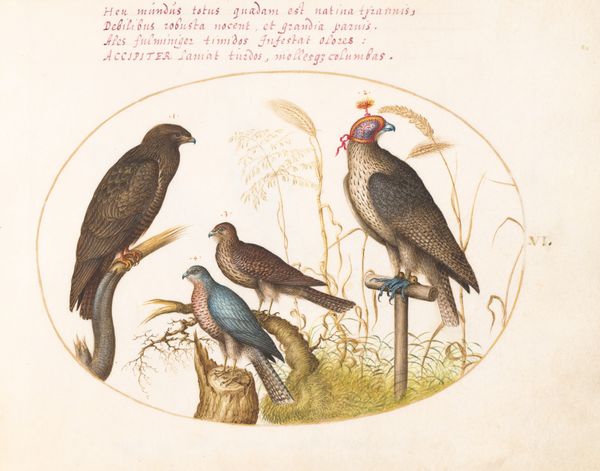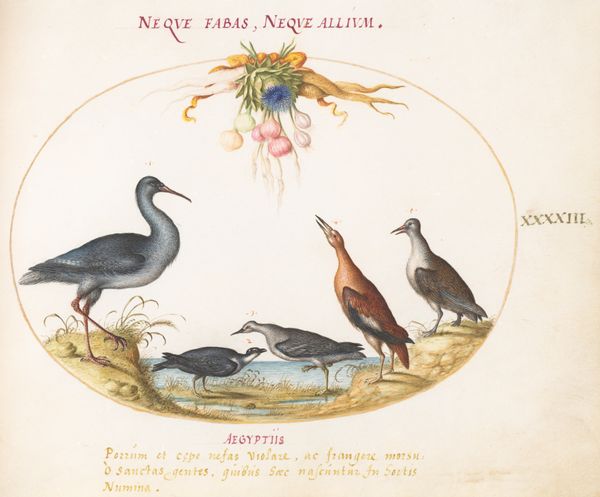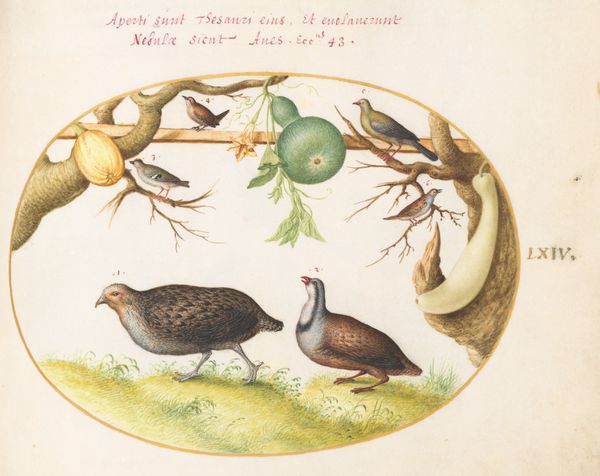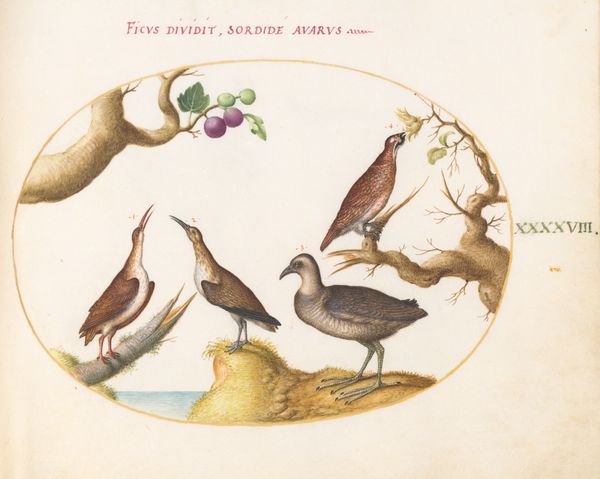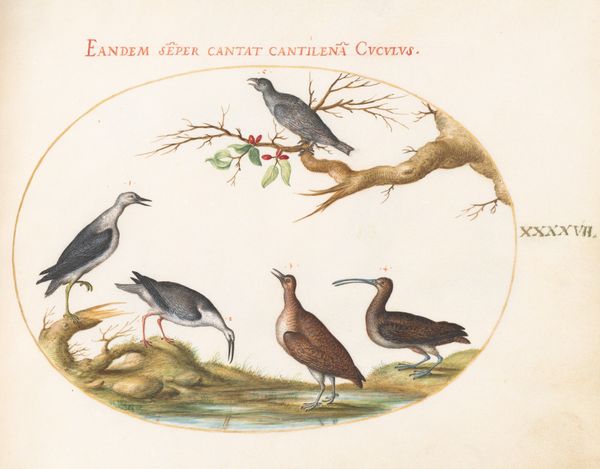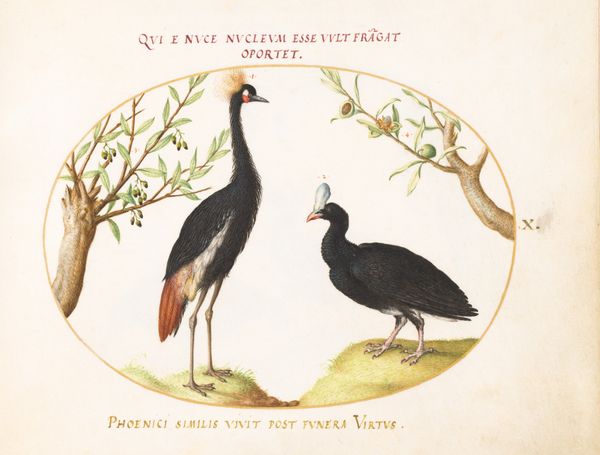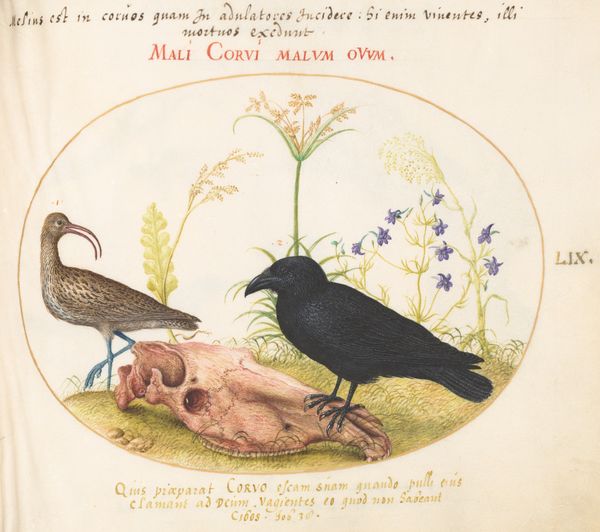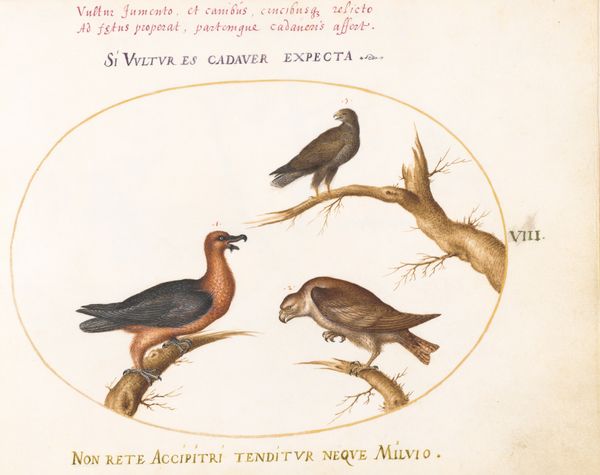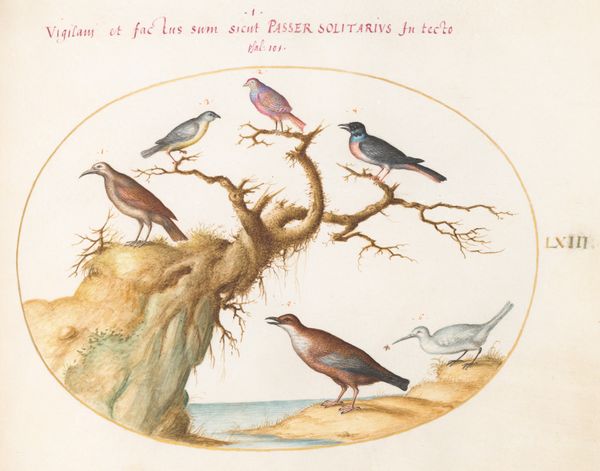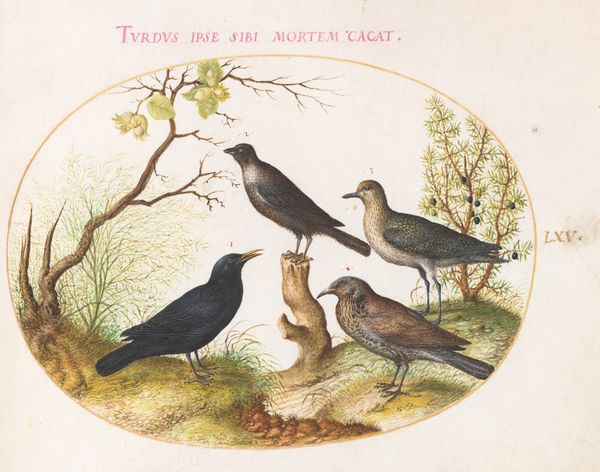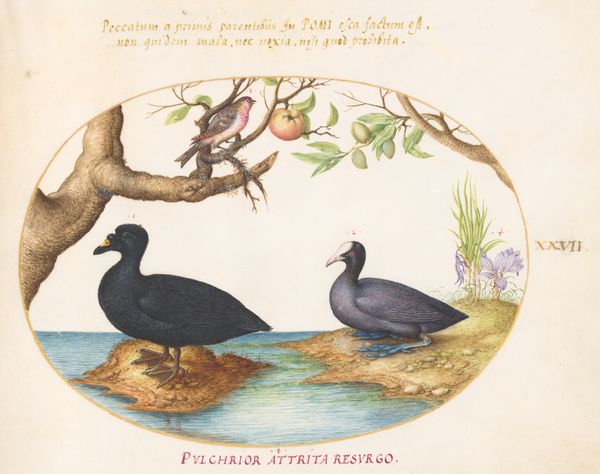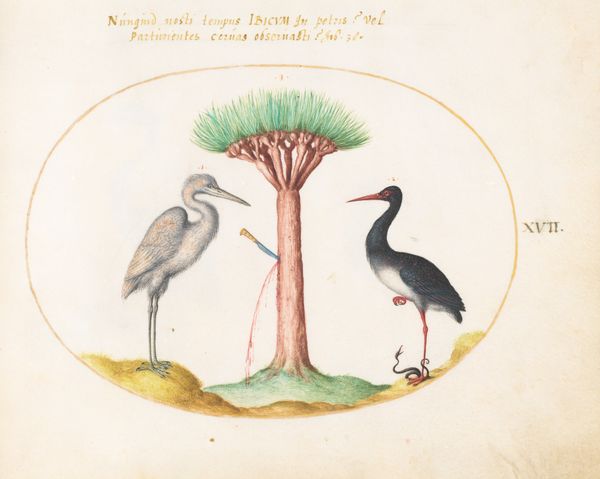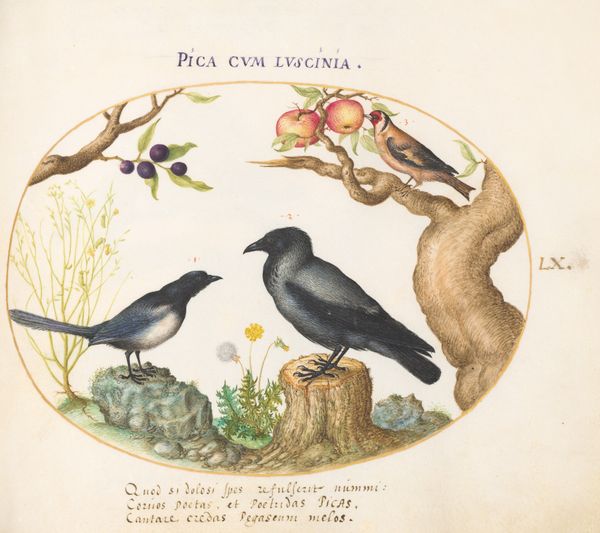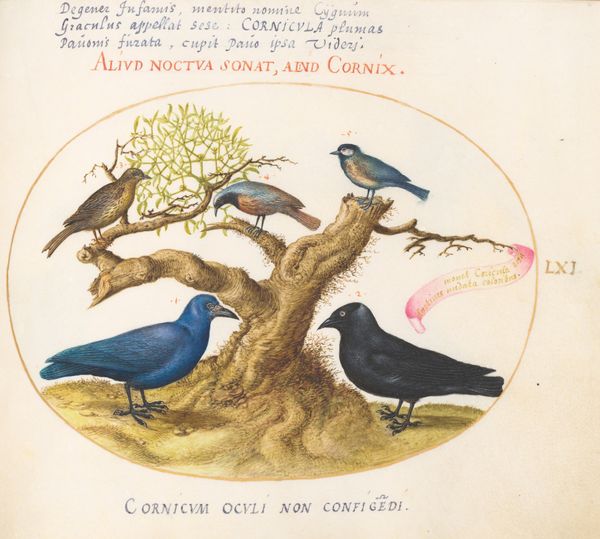
Plate 4: An Egyptian Vulture, a Northern Goshawk(?), and an "Aquila Heteropode" (Short Toed Eagle?) 1580
0:00
0:00
drawing, coloured-pencil
#
drawing
#
coloured-pencil
#
mannerism
#
11_renaissance
#
coloured pencil
Dimensions: page size (approximate): 14.3 x 18.4 cm (5 5/8 x 7 1/4 in.)
Copyright: National Gallery of Art: CC0 1.0
Editor: This is Plate 4: An Egyptian Vulture, a Northern Goshawk(?), and an "Aquila Heteropode" (Short Toed Eagle?), a colored-pencil drawing by Joris Hoefnagel from 1580. The composition, with its carefully arranged birds and the central plant, feels both scientific and slightly whimsical. What strikes you most about this piece? Curator: The balanced distribution of the subjects within the oval immediately grabs my attention. Note the deliberate placement: the birds create a triangular visual weight. Consider the use of colored pencil; its application defines the textures, bringing forward the smooth plumage, and jaggedness of the rocks. Have you also noticed the text? How does the inclusion of Latin phrases interplay with these illustrations? Editor: I hadn’t considered the lettering! It’s like Hoefnagel is aiming for scientific accuracy but within this decorative Mannerist style. It looks ornamental and descriptive at the same time. What is that visual contrast trying to say? Curator: Indeed, the text serves as an integral part of the design. The script's precise strokes parallel the careful detailing of the avian forms. It’s crucial to consider this Renaissance trend of fusing art and empirical observation. Where might that impetus come from? Editor: I guess artists at the time were also naturalists, interested in classifying the natural world, and using art as a tool to capture and organize all their findings... Curator: Precisely! Reflect on the inherent formalism, the relationship between the structure of scientific inquiry and the aesthetic pursuit evident here, and that provides insights into the broader cultural climate of the late Renaissance. Editor: So, by looking at composition, texture and Hoefnagel’s specific choices of materials and inclusions of text, we can really explore how knowledge was captured in art. That’s fascinating.
Comments
No comments
Be the first to comment and join the conversation on the ultimate creative platform.
